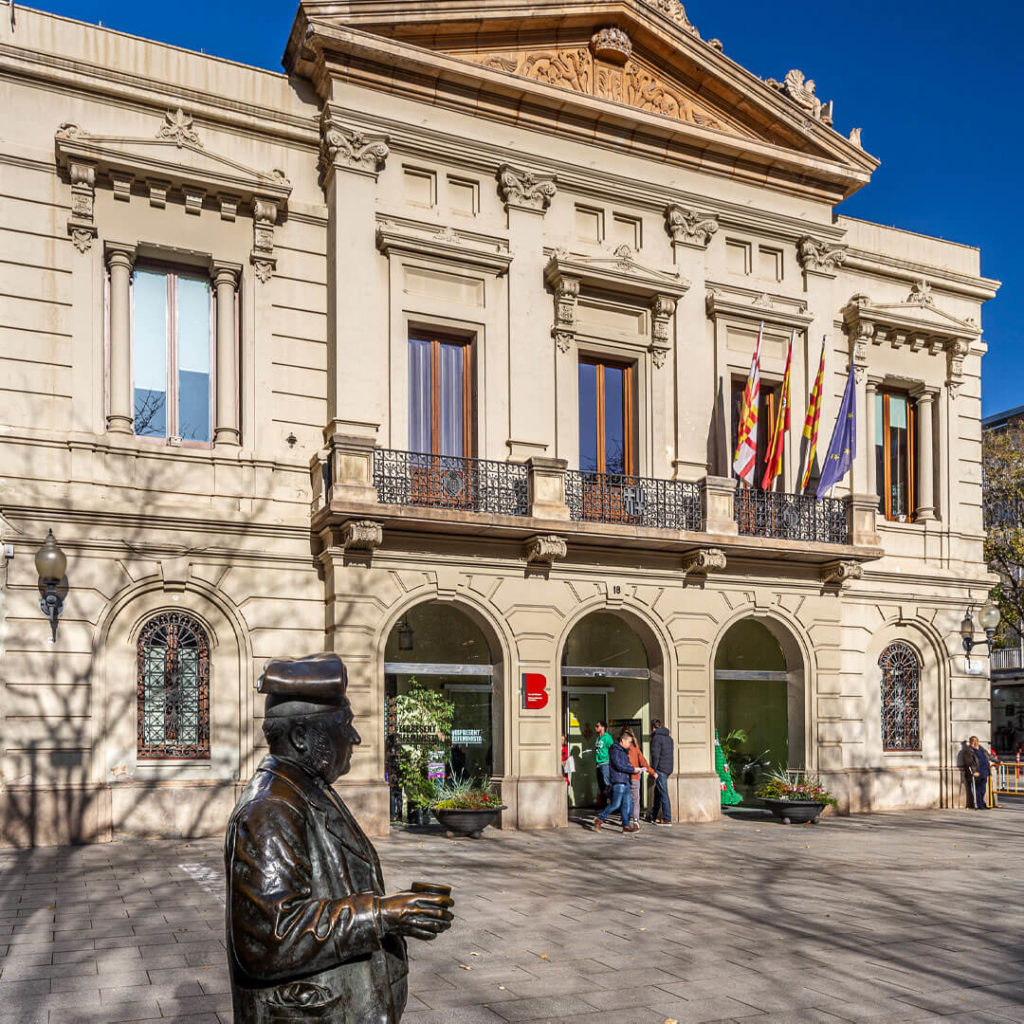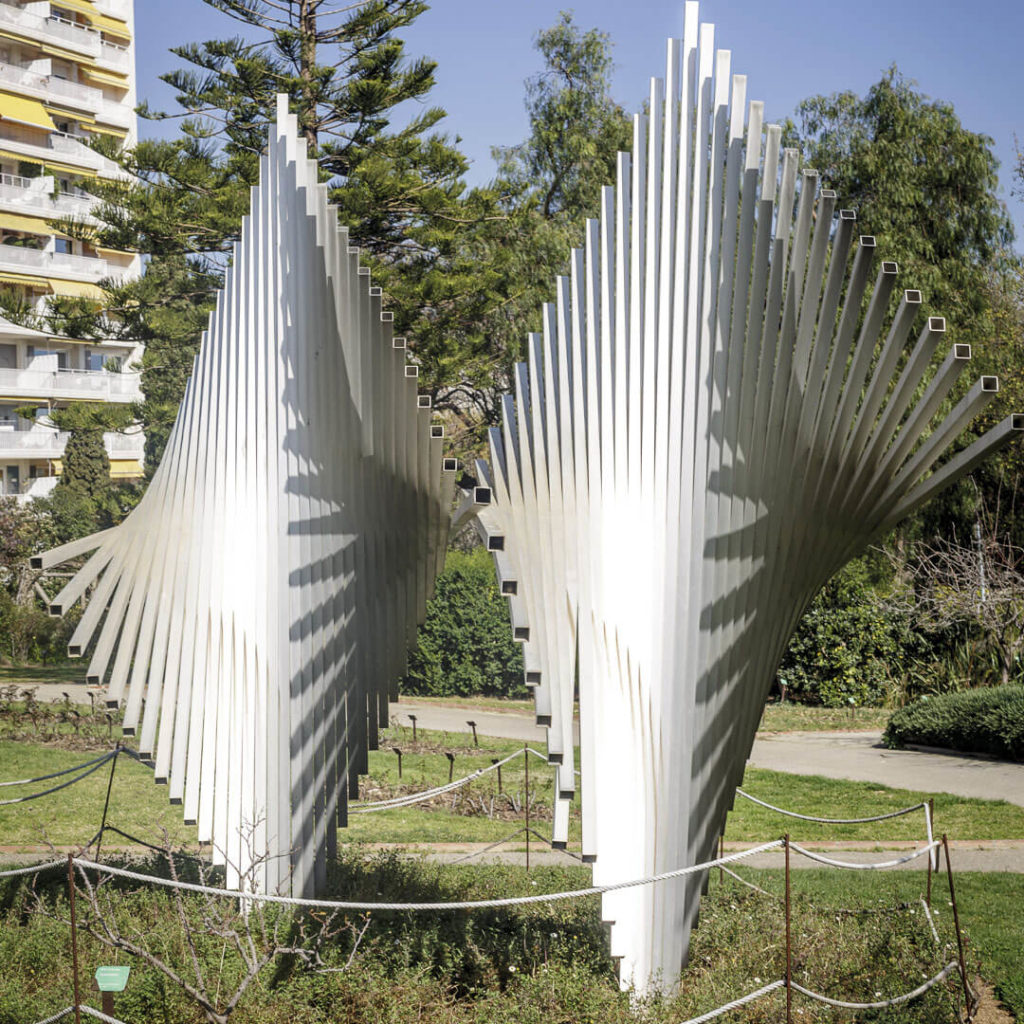Sport and nature route in les Corts

In the summer of 1992, Barcelona showed the world its charms, amazing people the world over as it became the world capital of sport for 15 days. However, the relationship between sport and the city didn’t start there. Barcelona already had a long history of practising sport and holding both national and international competitions. Policies to drive sport as a vehicle for education, health, training, transmitting values and increasing social cohesion have always been one of the city’s priorities.
La Maternitat i Sant Ramon neighbourhood tour

La Maternitat i Sant Ramon is one of the three neighbourhoods in the Les Corts District, bounded to the north by Avinguda Diagonal, to the east by Gran Via de Carles III, to the west by the town of l’Hospitalet and to the south with the district of Sants-Montjuïc, is the area that serves as a gateway to the city of Barcelona. Therefore, its history is closely tied to that of the towns and neighbourhoods around it: l’Hospitalet, Collblanc and Sants. The neighbourhood has a population of 23,868 residents living in an area measuring 190.30 hectares. Its current boundaries were set by the Barcelona of the Neighbourhoods plan approved by the City Council in 2006.
Les Corts neighbourhood tour

Les Corts comprises the areas of Pedralbes, Maternitat i Sant Ramon and Les Corts, from where it gets its name. The boundaries of Les Corts are marked by the streets of Gran Via de Carles III to the west, Avinguda de Madrid, Carrer Berlín and Avinguda de Josep Tarradellas to the south, and Avinguda Diagonal and Avinguda de Sarrià to the north. It is home to 45,976 residents and covers a surface area of 141 hectares.
Feminist route around les Corts

When you walk around the city, reading the plaques and posters, looking at any sculptures and images you come across, you could be forgiven for thinking that women never existed, that they have never done anything important or made outstanding contributions to improve the world we live in.
Les Corts sculpture route

Gran Via Diagonal, Argüelles Avenue, Catorze d’Abril Avenue, Generalísimo Francisco Franco Avenue and simply Diagonal Avenue… Various names have been given to the street designed by Ildefons Cerdà in the urban plan he drew up in 1860 to connect points far from the city and the Barcelona plain, beyond the grid layout of the Eixample. It is the largest of the three diagonal streets he planned – over 11 kilometres long – and presently connects the coastline, at the Fòrum, with Barcelona’s boundaries, in the Les Corts district.
Route around the South Campus

The South Campus, which encompasses the area between Avinguda Diagonal, Avinguda de Joan XXIII and Avinguda del Doctor Marañón, was founded in 1957 with the first faculty that the University of Barcelona (UB) located there: Pharmacy. In the early 1960s, the schools of Architecture, Surveyors (currently Construction) and Industrial Engineering were added, these became the seed of the campus of the future Polytechnic University of Catalonia (UPC), created in 1971. Since then, other institutions and organisations have been added, most of them from the two universities, and the city’s growth has led the campus to be surrounded by buildings instead of isolated, the way it was at first.
Pedralbes neighbourhood tour

Pedralbes is a neighbourhood in uptown Barcelona, located to the north of the Les Corts district and bordered by Esplugues de Llobregat, the Collserola range, the district of Sarrià-Sant Gervasi and two other neighbourhoods – La Maternitat and Sant Ramon and Les Corts. It is a residential area with a large number of prestigious schools and universities, as well as some extensive green spaces that make it a pleasant place to take a stroll and escape from the urban bustle. It is the wealthiest residential part of Barcelona and one of the city’s least densely populated areas, with 11,864 inhabitants spread over 270 hectares.
8. La Maternitat complex

This is a historical architectural complex dating back to the end of the 19th century where the Casa Provincial de Maternitat i Expòsits was installed. Its Modernista pavilions are currently the headquarters of various public institutions and authorities. The complex includes the Jardins de la Maternitat, gardens that are open to the public.
7. Camp Nou

Officially opened in 1957 and expanded in 1982, Barcelona’s football nerve centre, Camp Nou, not only includes the Barça stadium but also the club’s museum, one of the most visited in Catalonia.
6. Les Corts Cemetery

A municipal cemetery was built outside the town of Les Corts following the prohibition, issued in 1846, of burials in parish church cemeteries. The building of the administration, the chapel and the perimeter fence display Modernista features. Also notable are its Jewish section and funerary sculpture heritage.
